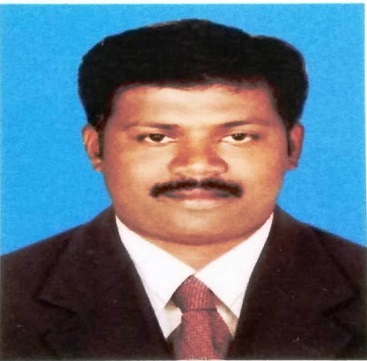Scientific Program

Eswaran Prabakaran
University of Johannesburg, South Africa
Biography:
Dr. Prabakaran Eswaran is currently working as a Postdoctoral Research Fellow (PDRF) under the supervision of Prof. Kriveshini Pillay Associate Professor in the, Department of Chemical Sciences, Doornfontein Campus, University of Johannesburg, South Africa. His Ph.D was awarded from the University of Madras, India and the thesis mainly focused on electrochemical sensors. His PDRF research involves the synthesis and characterization of fluorescent carbon quantum dots materials for forensic applications, novel metal oxide nanostructures for photocatalytic and forensic applications, graphene (GO), graphitic carbon nitride (g-C3N4) based on nanocomposites for photocatalytic and forensic applications and Electrochemistry. The synthesized nanomaterials were characterized by instrumental methods such as UV-visible spectrum, FT-IR spectrum, Fluorescence spectrophotometer, X-ray diffraction, BET, Elemental analysis of XPS, TGA, SEM, TEM, TOC, ICP-OES and Cyclicvoltammetry. Dr. Prabakaran is in possession of two years teaching experience (June-2014 to May-2016) (GKM College of Engineering Technology, Chennai-63 in India and is the co-supervisor for three Ph.D. students. He published 9 research articles in international journals during his Ph.D and four research papers and one book chapter has been published to the journals during his PDRF.
Abstract
A red emission europium (III) complex Na[Eu(phen)2.3H2O].4H2O has been synthesized using Eu(NO3)3.6H2O and 1,10-phenanthroline as precursors. This complex was mixed with D-Dextrose (D-dex) to prepare hybrid red emission fluorescent materials Na[Eu(phen)2.3H2O].4H2O/D-dex. The pure Na[Eu(phen)2.3H2O].4H2O complex and Na[Eu(phen)2.3H2O].4H2O/D-dex hybrid complex were characterized using different instrumental methods such as Fourier transform infrared spectroscopy (FTIR), X-ray diffraction (XRD), UV-visible spectroscopy, Fluorescent spectroscopy, Thermogravimetry-differential thermal analysis (TG-DTA), Scanning electron microscope (SEM) and Transmission electron microscopy (TEM) and Brunnauer Emmett Teller (BET) (for surface area measurements). The pure Na[Eu(phen)2.3H2O].4H2O complex and Na[Eu(phen)2.3H2O].4H2O/D-dex complex were tested for latent fingerprint detection (LFP) under UV light irradiation and under day light conditions. The hybrid complex of Na[Eu(phen)2.3H2O].4H2O/D-dex complex provided more visible and clearer fingerprint images and ridge details under the UV light irradiation when compared to visible light irradiation. The LFP image was not clearly explored by using hybrid Na[Eu(phen)2.3H2O].4H2O/D-dex complex under visible light irradiation due to the spreading of the fingerprint residue on the whole surface area. This hybrid Na[Eu(phen)2.3H2O].4H2O complex was also tested for LFP detection on both porous and non-porous materials under UV light (365 nm) and visible light irradiation. In all cases, the hybrid Na[Eu(phen)2.3H2O].4H2O/D-dex complex fluorescence powder enhanced LFP detection when compared to the LFP images of the pure Na[Eu(phen)2.3H2O].4H2O complex under UV light irradiation (365 nm) images. The Na[Eu(phen)2.3H2O].4H2O/D-dex complex powder is therefore a good labeling agent and results in better fluorescent activity for LFP detection for the identification of criminals in forensic investigations.
- HIV/AIDS and Retroviral Diseases
- HIV Related Infections, Co-infections & Cancers
- Stigma, Discrimination and Lived Experience With HIV
- HIV relation with Cardiovascular diseases and Aging
- HIV Diagnosis and Therapy
- HIV Drug Discovery, Research & Vaccines
- Viral, Bacterial, Fungal & Protozoan STDs
- Advocacy & Community Engagement in HIV Research
- Immunology and Infertility of STDs/STIs
- Recent Advancement in HIV/AIDS, STDs and STIs
- Current Focus in Virology Research

